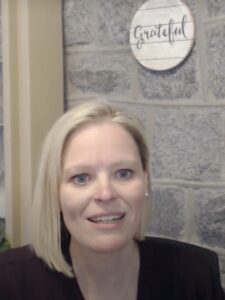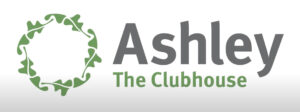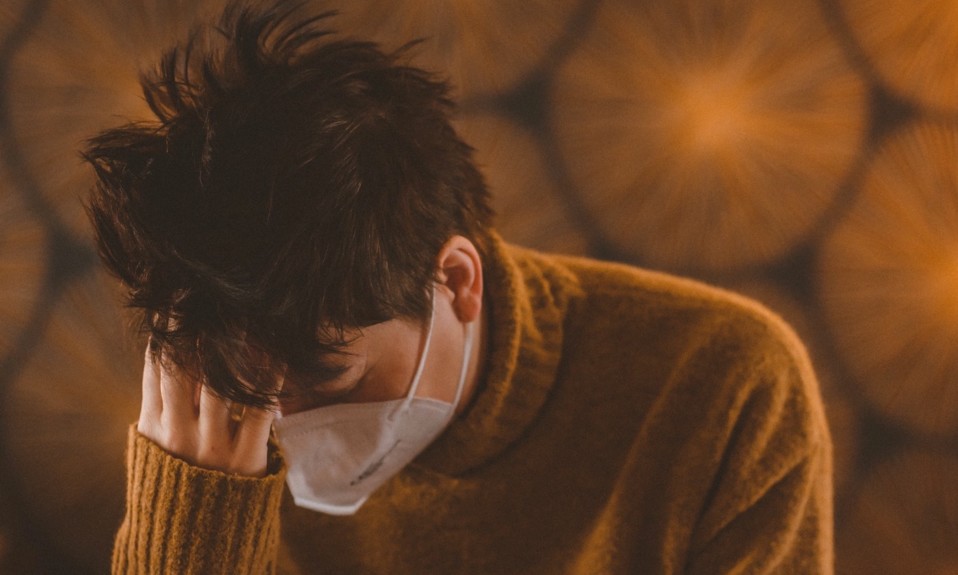Ashley Addiction’s Laura Dahl wants to change the trajectory of substance use disorder with Adolescent Clubhouse

By Jennifer Taylor
By this time about a year ago, Harford County, Md., already had begun to see the cascading effects of the COVID-19 pandemic. Then the county declared “isolation, stress, anxiety, unemployment and depression” as contributors to a significant uptick in fatal overdoses and relapses among people in long-term recovery.
Children of parents with substance use disorder have been part of the collateral damage. That’s why Ashley Addiction Treatment, based in Havre de Grace, Md., is reaching out to youth in Harford County who have been impacted by substance use. This month Ashley launched a free virtual program called Adolescent Clubhouse for Harford County residents that provides after-school and summer support care for children 12 to 17 years old.
“We know that there is an issue and we want people to seek help,” says Laura Dahl, LCPC, assistant program director of Family Services at Ashley and director of Adolescent Clubhouse.
The virtual program is designed to assist youth with resources early on and includes education and life-skills training. Clubhouse integrates the nationally and internationally recognized evidence-based Strengthening Families Program (SFP), which operates from a strength-based approach and provides skills and training for caregivers using positive language and tools that support the entire family unit, according to Ashley.
The Adolescent Clubhouse program is HIPAA- compliant and can be accessed by adolescents via computer, tablet or smartphone. Clubhouse hours of operation are Monday through Friday from 2 to 8 p.m. and Saturday from 9 a.m. to noon.
Dahl recently spoke with TreatmentMagazine.com about the new virtual program and Ashley’s goals to support its community.
Q: How did the Adolescent Clubhouse come about?
A: We’ve been a provider in the community here in Harford County for the past 40 years. In that time, we’ve had a tremendous impact and helped over 50,000 individuals [and over 100,000 family members]. We have a Family Services Department here on Ashley’s campus. We provide services to family members, we have a children’s program. It just made sense that the Clubhouse would naturally be birthed out of the work that we have been doing.
The virtual component I really do believe removes a lot of barriers, because it’s just a click of a link, whether it be on your computer, tablet or smartphone. With in-person [services], there could be transportation issues, lack of resources or lack of access.”
—Laura Dahl, director of Adolescent Clubhouse
Q: How did the well-being of adolescents of adults with substance use disorder become part of Ashley’s mission?
A: It’s something that’s been ongoing, but if I had to pinpoint a time, I would definitely say last year during the pandemic. It was very clear to us that resources were needed for the youth in our community.
According to the Substance Abuse and Mental Health Services Administration [SAMHSA], one in eight children [in the United States] are living in homes with at least one parent with substance use disorder. That opens them up to a whole host of negative impacts—child maltreatment, welfare involvement and then engaging in substance use themselves. What we want to do is be able to reach out that prevention arm and get ahead and empower these youth to be able to make those healthy decisions and learn that there are other ways, rather than turning to substances, to handle life on life’s terms.
Q: What have you learned about children who have a support like Adolescent Clubhouse in place?
A: What we do know is when we have a community and a strong support network around the youth, they have different people they can turn to in times of need. [If you] identify healthy adults or healthy peers to help them in their times of desperation or crisis, or even in their times of happiness, then they are more likely to take a step in a positive direction versus turning towards substances or self-destructive behaviors.
Q: How does Adolescent Clubhouse work for the people who seek to use it?
A: What we’re doing is directing residents of Harford County to the website: Immediately you’ll be greeted with information as to how to get into the Zoom Room where our peers are. We are welcoming adolescents, caregivers and even professionals that may want to refer somebody to the Clubhouse. If we had the physical building, the door would be unlocked and anybody could walk in. And that’s what this [Zoom] room is for. It’s for people to come in, to engage with us and to learn more. Then we will direct them to an application that lives on our website for them to fill out for the youth to become members of the Clubhouse. Once we have the application, we will then do an intake interview with the youth and the caregiver as we begin to provide structure and services that are going to be beneficial for the youth.

The qualification is to be at risk for substance use disorder. That can mean: “I have a parent who’s in recovery,” “I have a parent who has an active addiction” or even an aunt and uncle. Or it could be, “I’ve tried substances myself.” Really, it’s a very broad stroke to be able to help all the youth here in Harford County.
Q: Are there any other programs like this?
A: Yes, there are several other clubhouses in the state of Maryland. We’ve collaborated with them as we’ve begun to start up ours. They are very region-driven, just like we’re going to be, but they’re not in abundance either. There’s maybe four that I’m aware of in the state of Maryland right now.
Q: How does Adolescent Clubhouse help create healthy boundaries and a positive home environment for those who participate?
A: One of the programs that we are going to be utilizing is the Strengthening Families Program. That is an evidence-based nationally and internationally recognized program. And what that does is empower the caregivers and the youth with skills training, so that they can use positive language and so that it supports the entire family unit. That includes setting those healthy boundaries and having healthy communication and being able to interact within the family unit in a healthy way.
We will be doing group work around communication and role-playing, but also making it fun. …We want to have flow and real-life experience. So communication is key.”
—Laura Dahl
Q: Is this kind of taught communication skill set important to have at the outset of this program?
A: Yes. Communication is the foundation. We will be doing group work around communication and role-playing, but also making it fun. It’s important we stay in the lane of being fun and learning how to do things, but not in a way where it is stilted. We want to have flow and real-life experience. So communication is key.
Q: What are some barriers that keep families and youth from accessing this kind of support?
A: The virtual component I really do believe removes a lot of barriers, because it’s just a click of a link, whether it be on your computer, tablet or smartphone. With in-person [services], there could be transportation issues, lack of resources, or lack of access. We know that in families with substance use disorder there is this We don’t talk about it [element]. That can really be one of the largest barriers for us to get over.
Q: What is your ultimate hope for Adolescent Clubhouse?
A: My ultimate hope is that we change the trajectory of substance use disorder here in Harford County—that we truly break the cycle and we raise up the next generation in a healthy way.
Top photo: Ant Rozetsky













